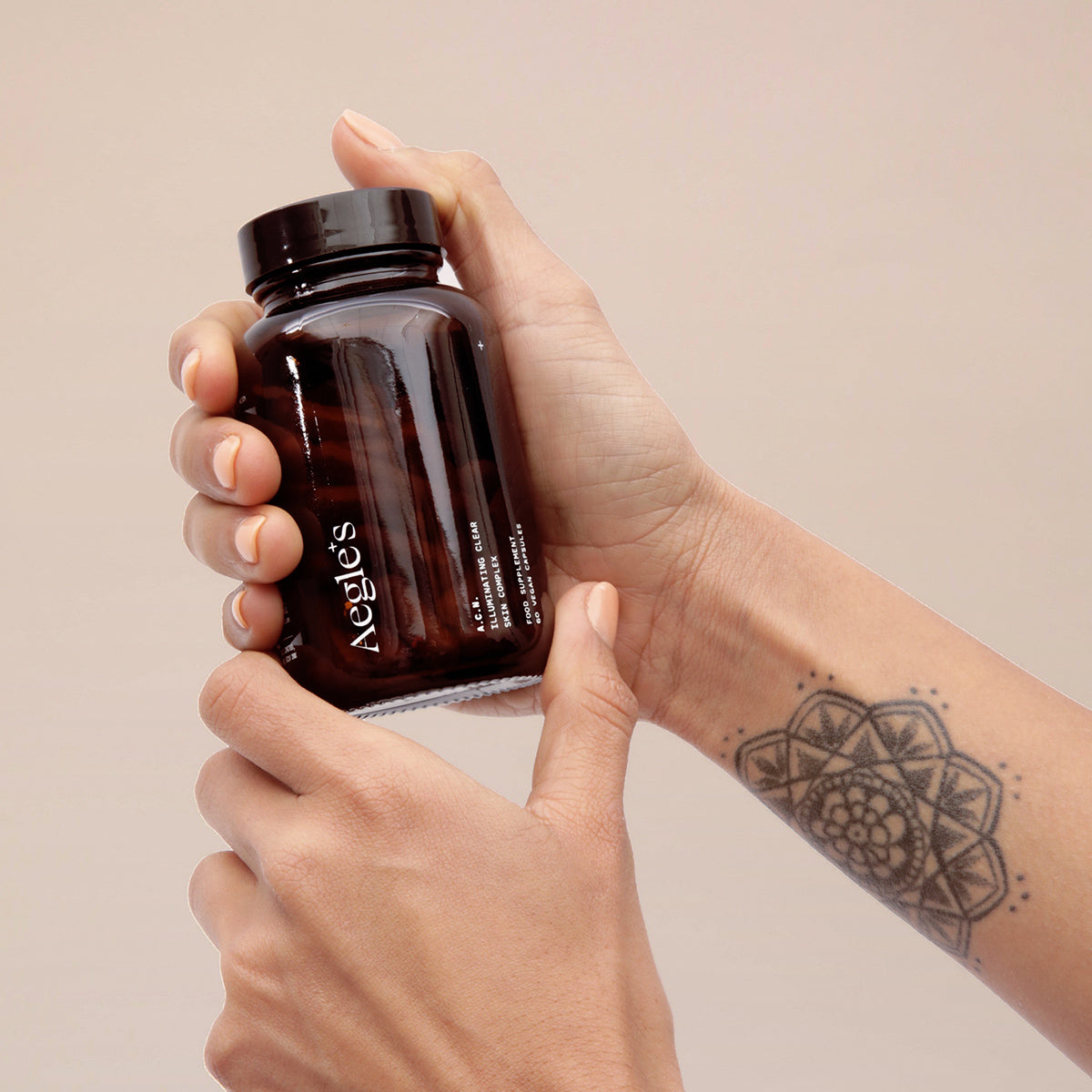Estrogen dominance is one of the leading causes of acne in adult women. But what exactly is estrogen dominance and what causes it?
What is estrogen dominance?
Women have three dominant types of estrogen in the body; estrone, estradiol, and estriol. Estrogen is a healthy and important hormone group that helps to regulate the female reproductive system.
It is this hormonal group that is responsible for the development of female characteristics, such as the growth of the breasts and wider hips. It is also essential for a healthy functioning reproductive hormonal system.
Estrogen dominance occurs when the level of estrogens outweighs the level of progesterone in the body, causing an imbalance. Progesterone is also an important hormone within the female endocrine system.
Whilst estrogens are a group of essential hormones, estrogen dominance can cause symptoms of imbalance and disease in the body, including acne. There are two ways that estrogen dominance can occur:
- Normal estrogen levels with low progesterone
- High estrogen levels with normal progesterone
The term “estrogen dominance” can be confusing because much of the time the ratio imbalance is due to low progesterone, and not the estrogen levels themselves. The dominance is the measure within the ratio.
Let’s take a look at both occurrences in more detail.
Low progesterone estrogen dominance
With low progesterone estrogen dominance, a woman will often experience acne that appears within the two week period leading up to her menstruation each month. She may also experience physical and/or emotional premenstrual syndrome within the same time frame.
The causes of this low progesterone estrogen dominance include:
- Anovulation
- Perimenopause
- Polycystic ovary syndrome
- Being on or coming off hormone releasing birth control
- Chronic stress
- Hypothyroidism
- Candida overgrowth
How does low progesterone estrogen dominance cause acne?
During the luteal phase (the second half) of a healthy woman’s cycle, her progesterone levels rise. These higher levels of progesterone combined with an increase in estradiol, cause insulin resistance. This allows more glucose to stay in the bloodstream, and therefore an increase in the production of sebum.
With this increased sebum production, there is a higher chance of the sebum becoming clogged in the hair follicle and then resulting in acne. In women with a healthy estrogen to progesterone ratio, the normal levels of progesterone in this luteal phase, work at reducing the excess sebum production.
In the case of a woman who has low levels of progesterone, there is less progesterone in the body to reduce the excess sebum production. She is then more likely to experience clogging of the hair follicles and acne, because of this excess sebum production.
Normal progesterone estrogen dominance
When a woman has elevated estrogens and normal range progesterone, she can also have estrogen dominance. This type of estrogen dominance is not as likely to cause acne. However, as any imbalance within a woman’s hormonal system can contribute to acne, it cannot be ruled out.
The causes of this type of estrogen dominance include:
- Insulin resistance
- Methylenetetrahydrofolate reductase (MTHFR) gene mutation
- Obesity
- Environmental toxins / exposure to synthetic estrogens (xenoestrogens)
- Consuming foods high in pesticides
- Gluten sensitivity
- Gut dysbiosis
- Imbalance of gut microflora
- Candida overgrowth
- Copper toxicity
Synthetic estrogens (xenoestrogens)
One of the causes of estrogen dominance in relation to too high estrogens in the body, is exposure to xenoestrogens.
Xenoestrogens are toxic estrogens that occur in our foods and in the environment that can contribute to elevated levels of unhealthy estrogens in the body. This type of estrogen is not produced by the body.
It is difficult to completely avoid xenoestrogens as they are found in most soft plastics and in some of the plastics in housing, such as vinyl flooring and plastic shower curtains. You may even find xenoestrogens in plastics in shoes that you’re wearing or within some of the cheaper fabrics in clothing. Xenoestrogens can interfere with the healthy functioning of the endocrine system of the body and cause a variety of health problems.
The link between xenoestrogens and acne is indirect. As xenoestrogens are classified as endocrine disrupting chemicals (EDC’s) they are known to cause problems within both the male and female reproductive hormonal system. Symptoms of imbalance within a woman’s reproductive hormonal system is premenstrual syndrome which includes acne.
Estrogen metabolism
Another cause of estrogen dominance with too high estrogens in the body is an imbalance in estrogen metabolism.
Estrogen is broken down in the body along two major pathways, one generating 2-hydroxyestrone (2OHE1) and the other 16-hydroxyestrone (16αOHE1).
16αOHE1 has been described as a “bad” estrogen, however recent studies have debunked this theory. Both 2OHE1 and 16αOHE1 pathways have distinct functions in the body and neither of them is good or bad. However, like everything else in nature they need to be in balance.
In the case of estrogen dominance in relation to estrogen metabolism, there is an imbalance in the estrogen metabolism ratio (EMR). An imbalance in the EMR has been linked to premenstrual syndrome, which includes acne.
Perimenopause
During the time that a woman’s body transitions into menopause, she will naturally begin to gradually produce less progesterone whilst her estrogen levels remain stable or even increase.
This results in a type of natural estrogen dominance that is normal for a healthy woman transitioning into menopause. Some women experience an increase in acne during this time of perimenopause, as their sebum reducing hormone progesterone begins to drop.
It is also possible for a woman to experience acne during this time when she never experienced problems with her skin in the earlier years of her life. However, perimenopausal acne is unlikely to be more than mild, as a woman’s sebum production steadily reduces after the age of 35.
What are the symptoms of estrogen dominance?
- Acne
- Premenstrual Syndrome
- Fibrocystic and tender breasts
- Heavy bleeding in menstrual cycles
- Irregular menstrual cycles
- Weight gain
- Uterine fibroids
Start your journey to heal your skin now.

Start your journey to heal your skin now.
- Contains ingredients clinically proven to improve blemishes and skin radiance.
- Formulated by one of the world's leading skin practitioners.
- The only supplement that works for the three main causes of blemishes, blackheads and oily skin.
Discover more articles
- Choosing a selection results in a full page refresh.






